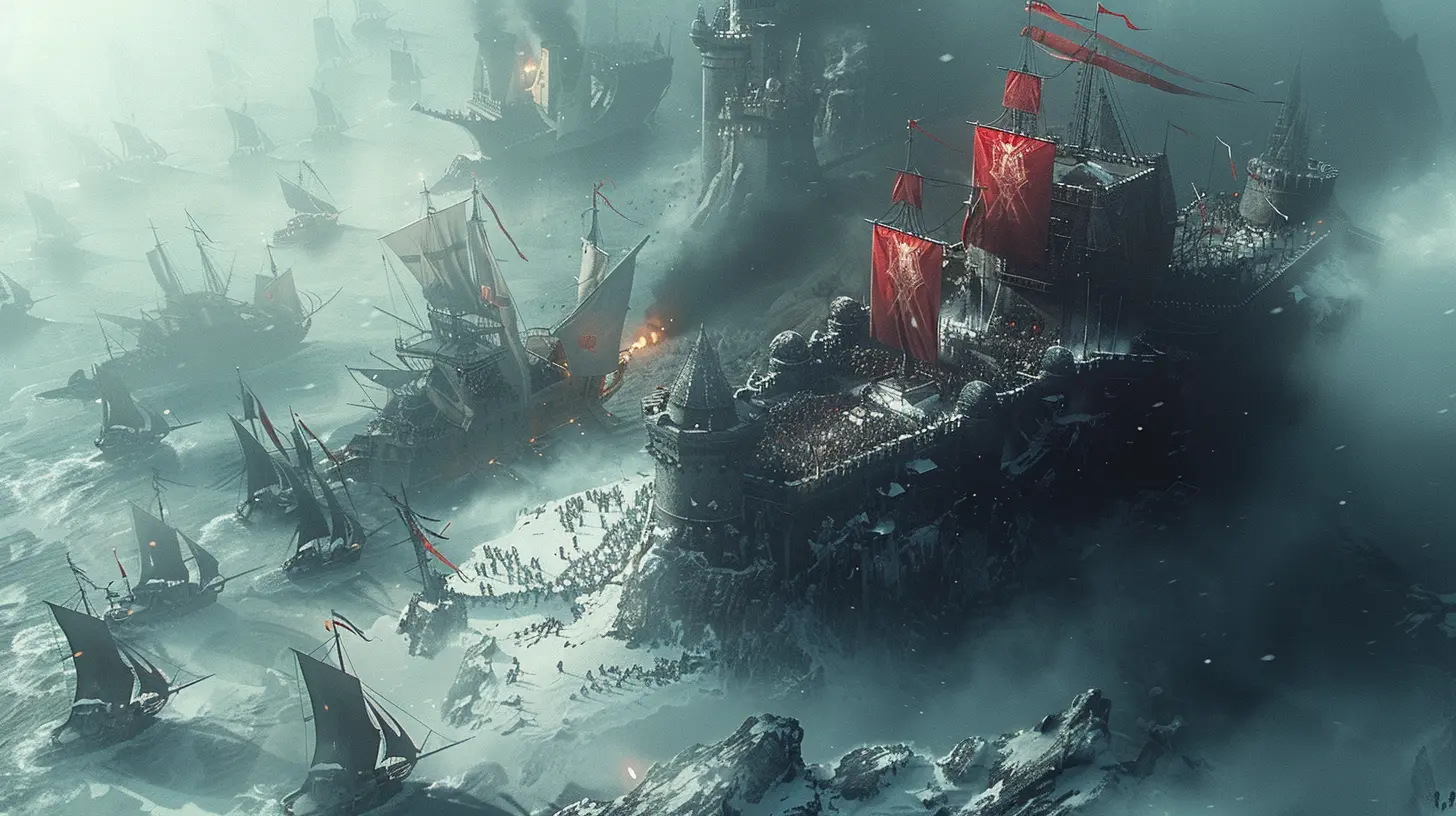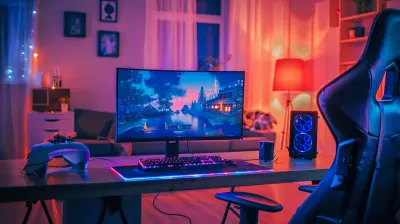Deep Dive into Asymmetrical Balance in Real-Time Strategy
28 August 2025
Real-time strategy (RTS) games are a treasure trove of complexity and adrenaline-fueled decision-making. They’re what you turn to when you want to flex your tactical brain muscles while testing your ability to think on the fly. One of the most fascinating—and dare I say, maddening—elements of RTS games is "asymmetrical balance." It’s a term that might not mean much to your average gamer, but it is the very reason why RTS games feel dynamic, varied, and rewarding. So, let’s dive in and unpack this magical concept. By the end of this, you’ll not only understand why asymmetrical balance makes RTS games shine but may also get why it’s such an intricate beast to design.
What Is Asymmetrical Balance?
Alright, let’s get this straightened out first: what even is asymmetrical balance? It sounds like something you’d hear in an art class or a physics lecture, right? But no, here in RTS-land, it’s something far more captivating. Asymmetrical balance refers to a game design concept where different factions, races, or units in a game aren’t identical but still maintain a sense of fairness and competitiveness.Think of it like a rock-paper-scissors system cranked up to 11. Each faction (or player side) has its own unique strengths and weaknesses. Instead of everyone playing with the same tools, the goal is for every faction to feel distinct yet equally viable. It’s like comparing apples to oranges…but somehow making sure both are equally tasty.
Symmetry vs Asymmetry in RTS: Why It Matters
Let’s break this down further with an example. Imagine an RTS game where all the factions are exactly the same—like a digital mirror match. Each player has the same units, strategies, and tech trees. Sure, it might be “balanced,” but where’s the fun in that? That’s symmetry, and at its worst, it can feel stale and uninspired.Now, throw asymmetry into the mix. One faction might be a technologically advanced alien race that excels at long-range attacks, while another could be a swarm-like hive with crazy-fast unit production. Suddenly, the game opens up into a world of possibilities. Strategies aren’t just about executing the same cookie-cutter build orders—you're also trying to play to your faction's strengths while exploiting your opponent's weaknesses.
In short, asymmetrical balance is where strategy really happens. It’s where creativity meets cunning. And it’s why RTS games like StarCraft, Warcraft III, and Age of Empires are still talked about decades after their release.
Why Asymmetrical Balance Is a Game Designer’s Nightmare
Here’s the thing: while asymmetrical balance is awesome for players, it’s a gigantic headache for game developers. Balancing factions that are fundamentally different from one another is like trying to balance a seesaw with a watermelon on one side and a bowling ball on the other. It’s not impossible, but it sure isn’t easy either.The Three Core Challenges of Asymmetrical Balance
1. Diverse Factions, Same Playing Field:Designers have to make sure that no matter how different factions are, they all have an equal chance of winning. Too powerful? Everyone will pick that faction. Too weak? Nobody will touch it. Striking that balance is like walking a tightrope.
2. Meta Shift Chaos:
The RTS meta—the strategies and tactics players rely on—evolves constantly. What feels balanced in testing might fall apart when thousands of players find exploits or abuse certain mechanics. Developers have to anticipate this (good luck!) and be ready to patch their game accordingly.
3. Player Perception:
Even if two factions are perfectly balanced on paper, perception can still be a killer. If players think a faction is overpowered or underpowered, it can skew how the game is played, regardless of the truth.
Legendary RTS Games That Nailed Asymmetrical Balance
Let’s take some time to appreciate the rockstars of the RTS world. Balancing asymmetrical factions is a Herculean task, but a few games have pulled it off so well they deserve a standing ovation.1. StarCraft Series
If you’ve played StarCraft, you already know: Terran, Protoss, and Zerg are about as different as factions can get. The Terrans are adaptable and defensive, the Protoss are expensive and high-tech, and the Zerg rely on overwhelming numbers. Yet, the game remains one of the pinnacles of asymmetrical balance. Why? Because every strategy has a counter-strategy. It’s a delicate ecosystem where no faction rules supreme—at least, not for long.2. Warcraft III
Before World of Warcraft dominated the RPG scene, Warcraft III was showcasing how asymmetry could work in an RTS. Each faction (Humans, Orcs, Night Elves, and Undead) had unique units, heroes, and abilities that completely changed the way you played. Yet, somehow, they all felt equally powerful. Add in the hero units, and the result was a deep, strategic playground that’s still beloved today.3. Company of Heroes
This one’s for all the history buffs out there. Company of Heroes takes asymmetry to a gritty, realistic level with its World War II factions. Each side has access to historically inspired units, which makes the game not only engaging but also immersive. And yet, the balance is razor-sharp—you never feel like one faction has an unfair advantage over the other.Why Asymmetry Keeps Players Coming Back
So, what makes asymmetrical balance so addictive? Why do players like you and me keep sinking hundreds of hours into RTS games that embrace this design philosophy? The answer lies in variety and unpredictability.1. No Two Matches Feel the Same
When factions are asymmetrical, every match forces you to think differently. Playing against a Zerg opponent in StarCraft requires a completely different approach than facing off against Terran. You’re constantly adapting, experimenting, and learning. It keeps your brain engaged—and let’s be real, it keeps your blood pumping.2. Replayability Through the Roof
Asymmetrical RTS games offer insane replay value. Once you’ve mastered one faction, you can switch to another and experience the game in an entirely new way. It’s not just a change in units or aesthetics—it’s a shift in how you approach every decision.3. The “Aha!” Moment
There’s something deeply satisfying about figuring out how to counter an opponent's strategy. That "aha!" moment when you outsmart them using your faction’s unique tools? Priceless. It’s like solving a puzzle, only your opponent is a living, breathing person trying just as hard to outsmart you.The Future of Asymmetrical Balance in RTS Games
As we look ahead, it’s clear that asymmetrical balance isn’t going anywhere. In fact, with advances in AI, machine learning, and game design tools, developers are getting better at fine-tuning this delicate dance. However, the rise of other genres (like MOBAs and battle royales) has pushed RTS games to the sidelines in recent years.The good news? Indie developers are keeping the RTS spirit alive with fresh takes on asymmetry. Games like Northgard and Iron Harvest showcase modern spins on the formula, proving that asymmetrical balance still has plenty of stories to tell.
Final Thoughts
Asymmetrical balance is the lifeblood of any great RTS game. It’s what keeps players glued to their screens, devising new strategies and yelling at their monitors when things go sideways. Sure, it’s a monumental challenge for game designers—but when done right, it’s downright magical.The next time you’re controlling a swarm of Zerg or commanding a platoon of Terran marines, take a moment to appreciate the brilliance of asymmetrical balance. It’s the unsung hero of RTS games, making every match feel like an epic battle of wits, ingenuity, and raw skill.
all images in this post were generated using AI tools
Category:
Real Time StrategyAuthor:

Avril McDowney
Discussion
rate this article
1 comments
Tala McMillen
Asymmetrical balance is the key to innovation in real-time strategy games. Embracing unique factions fosters dynamic gameplay and strategic diversity. Developers must prioritize this balance to enhance player engagement and challenge. The future of RTS lies in the rich complexities of asymmetry—let's champion this evolution!
September 8, 2025 at 4:27 PM

Avril McDowney
Absolutely! Asymmetrical balance not only enriches gameplay but also encourages strategic depth and player engagement. It's essential for the evolution of RTS games. Thank you for highlighting this vital aspect!


